
Moving to New York City: What to Know Before You Go
Mar 31, 2023 / Alyssa Duranty
Moving to New York City has probably crossed your mind at least once. The iconic American city is full of hustle and bustle, and if that’s your thing, then this may be the town for you.
Full of history, culture and people — like, lots of people — there’s a lot to know about America’s largest city.
If you need some convincing on why the Big Apple is the city for you — or perhaps you want some moving tips before you arrive in the concrete jungle — keep reading for a moving guide that will focus on how to pick the right neighborhood, how to find an apartment there, and how to get around without a car. Trust us: Life will be easier without four wheels.
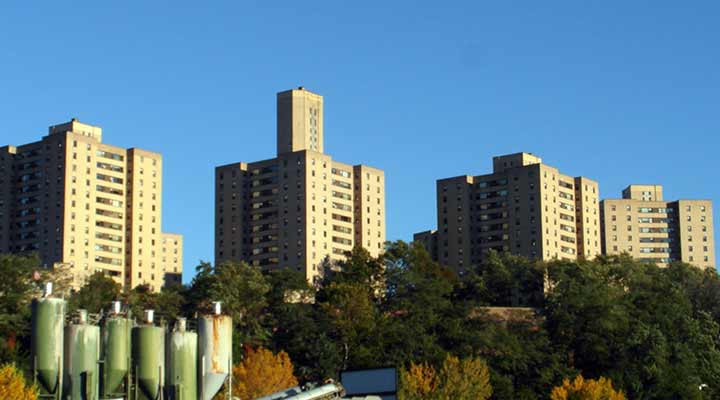
Image by Reading Tom
New York City Neighborhoods: How to Choose Wisely
Look closely at metro New York and you’ll find people from all around the world, and they’re constantly on the move. High rents and new immigrants can remake a neighborhood seemingly overnight. As you plan your move, here’s how to measure prospective neighborhoods.
Moving Tips From Longtime New Yorkers
Moving for work? Make friends with your future coworkers now and ask them where they live. Search your social network (on Facebook, LinkedIn, etc.) for friends who know the city and ask their advice as well. If you’re short on contacts, search sites such as Niche and StreetAdvisor to see how people feel about where they live.
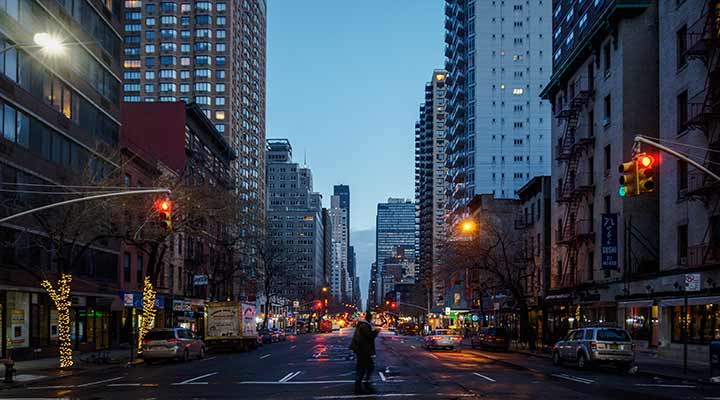
Image by Heath Cajandig
What Are the Best Schools in New York City?
If you’re moving with kids, being near good schools is a must. New York has some of the best public and private schools in the nation, as well as some of the lowest-performing. GreatSchools.org and U.S. News & World Report are good places to start reviewing schools before you move.
How to Use the New York Subway
You’ll pay a premium, but the closer you are to a train stop, the happier you’ll be. You’ll also want to make sure you’re as close as possible to work, your child’s school and life’s essentials (grocery stores, health care, entertainment).
Where to Enjoy Nature in NYC
After a month or two of living in the concrete jungle, you may start craving trees, grass and a little unobscured sky. Luckily, New York has surprisingly wonderful parks. Some, like the Highline and Central Park, are only-in-New-York experiences, which means you’ll pay only-in-New-York rents to be anywhere near them. Other areas, such as the green space in East Harlem, give you room to roam with a much lower price tag.
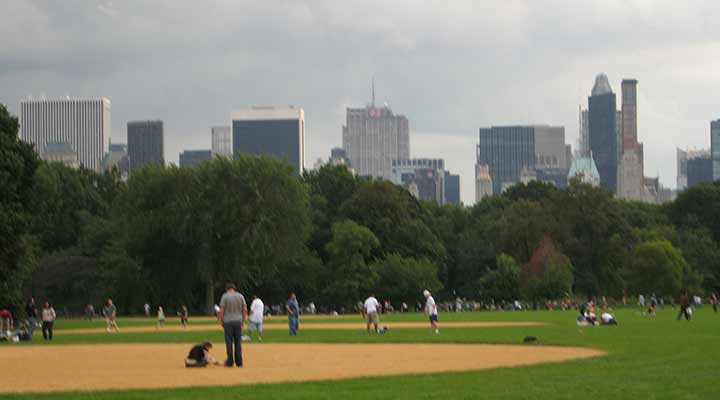
Image by Skellig2008
How to Avoid Loud Neighborhoods in New York City
Noise is one thing NYC newcomers just don’t expect. Late-night bars, loud neighbors, 4 a.m. trash trucks — New York can be a noisy place, even in the middle of the night. It is the city that never sleeps, right? Talk to people who live in the neighborhood you are considering to get a sense of the nighttime vibe. As a wise person once said: It’s better to commute to the party than live in it.
For a detailed look at the whole city, check out this cool, interactive map of noise (and other) complaints filed with the NYPD.
Getting an Apartment in New York City
From the outside, finding an apartment can seem impossible. We’re here to tell you that it’s difficult, but doable. People move to New York from all over the world and make it. Why shouldn’t you?
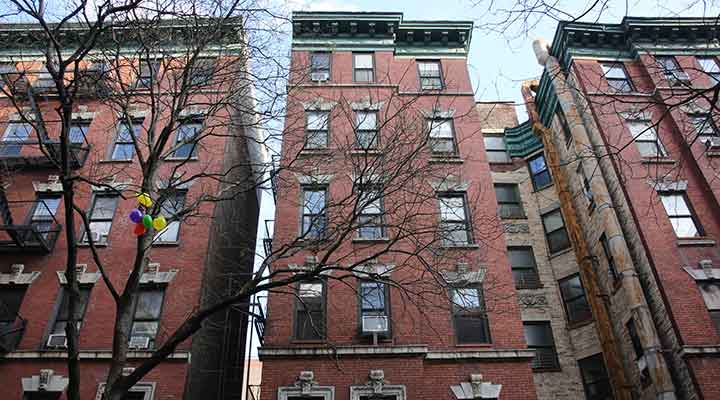
Image by Paul Sableman
Affordable New York City Apartments
If you want to sign a lease on your own, with no roommate or guarantor such as Mom or Dad, you may need to show a yearly income equal to 40 times the monthly rent. Got your eye on a $3,000-a-month place? You’ll need to be earning $120K a year to afford it. Does that seem high? You might want a roommate (more on that below).
Expect Big Deposits Before Moving Day in NYC
Landlords typically want three months’ rent up front (first month, last month and a security deposit). For a $3,000-a-month apartment, you’ll need $12,000 in cash to move in.
Look for Apartments Just Outside Your Dream NYC Neighborhood
Hopefully, you’ve chosen a neighborhood. If the area you like is out of your price range, look on the fringes. In New York, a neighborhood’s cachet — and rent — can change street by street. Once you’ve narrowed your target, hit the internet. Craigslist, Naked Apartments and StreetEasy are good places to start.
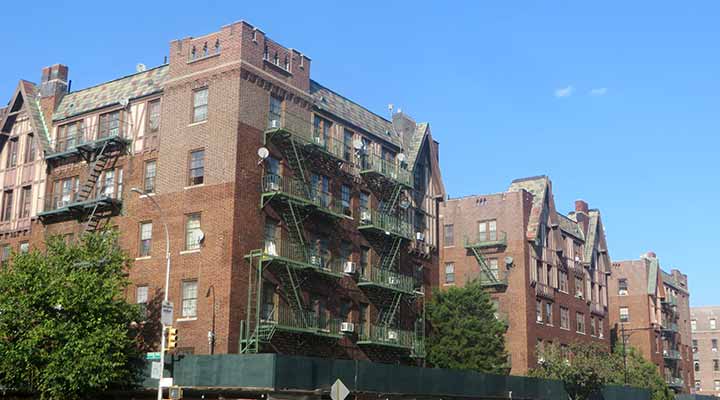
Image by Eden, Janine and Jim
Find a Realtor in New York City
Brokers know the city. They can help you find less expensive, but still safe, neighborhoods and apartments that give you more for your rent. They also charge 12 to 15 percent of the annual rent on the apartment they broker for you. For a $3,000-a-month place, that’s $5,400.
Rooms for Rent in New York City
If you’re young, single and just getting to know the city, there are thousands of people looking for roommates. You can take over someone else’s lease, join a new group of tenants or team up with someone you know and find a new place together. No matter how you do it, having a roommate reduces your rent and your utilities and — hopefully — enlarges your circle of friends.
Getting Around New York City
It may surprise you, but New York is a city of train- and bus-riding walkers. Cars are too expensive to keep in the city, and mass transit can get you close to just about any place in the five boroughs and New Jersey. So lace up those running shoes and learn how to commute like a New Yorker.
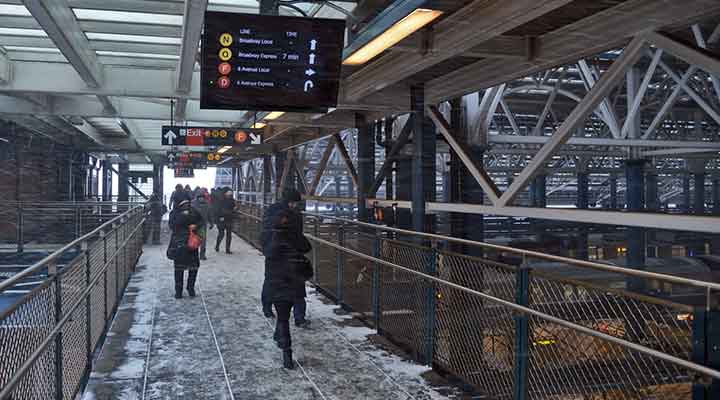
Image by Metropolitan Transportation
Moving to New York City: How to Get a MetroCard
Pick up a MetroCard from a station agent or a vending machine at the station. You can load it with cash and pay per trip or save some money when you buy a seven- or 30-day pass. Buying a pass gives you unlimited rides on the subway and bus lines in the five boroughs.
Some non-MTA systems (such as the PATH lines to New Jersey) accept MetroCards for per-trip fares but don’t accept Metro passes. That’s why it’s smart to keep a small cash balance on your MetroCard, even if you have an unlimited pass.
Get to Know the New York City Subway
Twenty-seven lines, 472 stations, five boroughs — it’s going to take a little while for you to sort it out. Don’t worry! If you miss a train, there’s always another one coming. The New York subway never closes.
Get the MTA Subway App
MTA’s official subway map app for smartphones can help you navigate the system and plan routes, and it gives you live train status. You can find it in the App Store and on Google Play.
Get a Paper MTA Map
There’s no cell service in many of the tunnels, so grab a paper map and use it. Local tip: Don’t stop and stare at your map in the middle of a stairwell; that’s a tourist move. Move off to the side before you study it.
Pay Attention to New York Subway Numbers, Not Colors
Pay attention to the numbers and letters: They tell you where the train goes. The colors tell you only which track the train runs on through Midtown Manhattan. For example, you can ride the A, C or E, but you can’t catch the blue line.
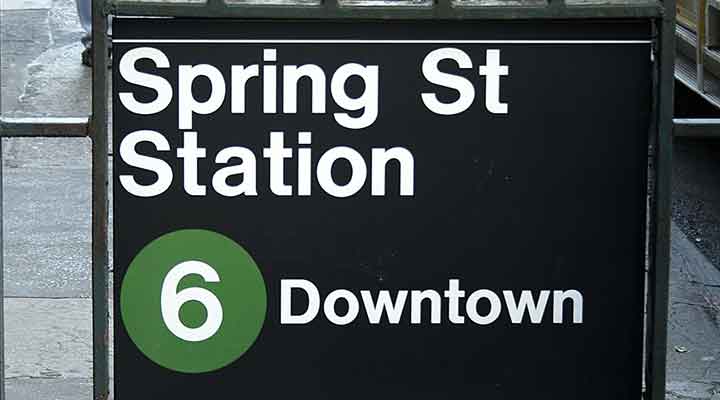
Image by Niklas Hellerstedt
Express Trains in New York City
On the map, stops with a solid black dot are local stops. Stops with an open circle are express stops. Here’s the tricky part: Express and local trains share the same track and the same letter or number. If you want to go to a local stop, make sure you get on a local train. If you get on an express, you’ll overshoot your stop.
Avoid Getting Lost on the New York Subway
In Manhattan, you’re either going Uptown toward the Bronx (north) or Downtown toward Brooklyn (south). You’ll see Uptown/Downtown on station entrances, platforms and train signs.
Pedestrian Tunnels in NYC Will Save Your Commute
On the Metro map, straight black lines between stations represent pedestrian tunnels. Use them to switch trains and stations without hiking up to street level, across a busy street and back down.
Get Help Navigating the New York Subway System
New Yorkers love to tell you where to go and what to do. Seriously! They’re some of the friendliest, most helpful citizens of any city. If you don’t know which train to take, ask for help. If you’re shy, ask a transit officer or station attendant.
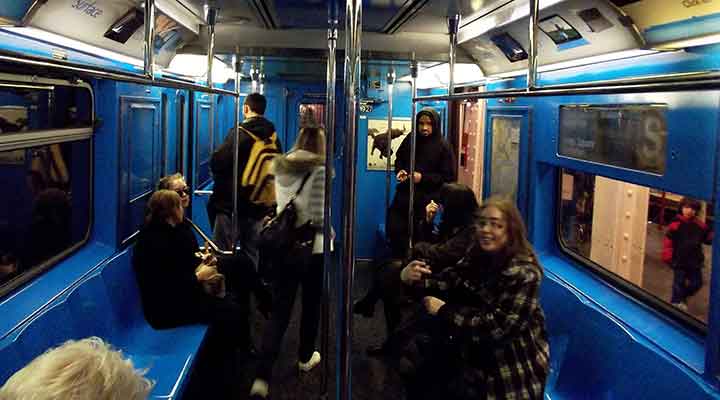
Image by The All-Nite Images
Other Public Transit Options in NYC
The subway is just the beginning of the New York/New Jersey transit system. There are buses, commuter rail, ferries, Amtrak and more. From a subway in the city, you can get to Albany, Boston and Washington, D.C., without a touching a car. It’s pretty amazing.
Car Sharing in New York City
Do you still feel the need for speed, or maybe you just need some time behind the wheel? There are ways to live in New York City and still have access to a car. Car-sharing apps make it easy to take a short trip. Maven, Car2Go and Zipcar are popular options. For longer trips, you can always rent a car. If you really have your heart set on keeping your car, you could store it with family or friends, or at a storage facility outside the city where you can visit it on weekends.






